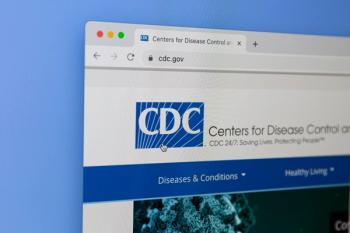
CDC: US Influenza Activity on the Rise
Although activity remained low during October 2017, researchers reported an increase in influenza viruses since the beginning of November.
Influenza activity in the United States is increasing, according to a recently-published CDC Morbidity and Mortality Weekly Report.1
Although activity remained low during October 2017, researchers reported an increase in influenza viruses since the beginning of November, and several influenza activity indicators were higher than is typically seen for this time of year. According to the report, the most commonly identified virus has been influenza A (H3N2) viruses.
Most of the influenza viruses characterized during this time were genetically or antigenically similar to the 2017-2018 Northern Hemisphere cell-grown vaccine references viruses. Although it is difficult to predict an influenza season, the authors noted that when A(H3N2) viruses was the dominant influenza strain in past seasons, hospitalizations and deaths were more common and the effectiveness of the vaccine was lower.
Data were collected from public health laboratories where 8777 specimens were tested from October 1-November 25, 2017. Of those who tested positive for influenza (22%), 87% tested positive for influenza A and 13% for influenza B viruses. Among the influenza A viruses, 90% were influenza A(H3N2).
Additionally, age-based data were available for 1737 patients tested by public health laboratories. Influenza A(H3N2) viruses accounted for 69.9% of viruses identified among children aged 0-4 years old and 87.8% of viruses among individuals 65 years of age or older.
Circulating influenza viruses collected since October 1, 2017 that were tested demonstrated sensitivity to all 3 antiviral medications available for use against influenza including: oseltamivir, zanamivir, and peramivir.
From October 1-November 25, 2017, outpatient visits for influenza-like illness increased from 1.3% to 2.3%. Additionally, during the surveillance period, 566 laboratory-confirmed influenza-related hospitalizations were reported. Since October 1, the weekly percentage of deaths attributed to pneumonia and influenza has ranged from 5.7% to 6.2%, which has not exceeded the epidemic threshold of 6.5%.
According to a report published in the New England Journal of Medicine, analyses of the 2016-2017 influenza season in Australia indicate a preliminary estimate that the influenza vaccine, which has the same composition as the US vaccine, was only 10% effective against influenza A (H3N2).2
The authors emphasized that treatment of influenza with antiviral medications as close to the onset of illness as possible is recommended for patients with confirmed or suspected influenza who have severe, complicated, or progressive illness, who require hospitalization, or who are at high risk for influenza complications.
Reference
1. Dugan VG, Blanton L, Abd Elal AI, et al. Update: Influenza Activity — United States, October 1-November 25, 2017. MMWR. 2017; 66(48);1318—1326.
2. Paules CI, Sullivan SG, Subbarao K, et al. Chasing Seasonal Influenza - The Need for a Universal Influenza Vaccine. NEJM. November 29, 2017. doi: 10.1056/NEJMp1714916.
Newsletter
Stay informed on drug updates, treatment guidelines, and pharmacy practice trends—subscribe to Pharmacy Times for weekly clinical insights.














































































































































































































